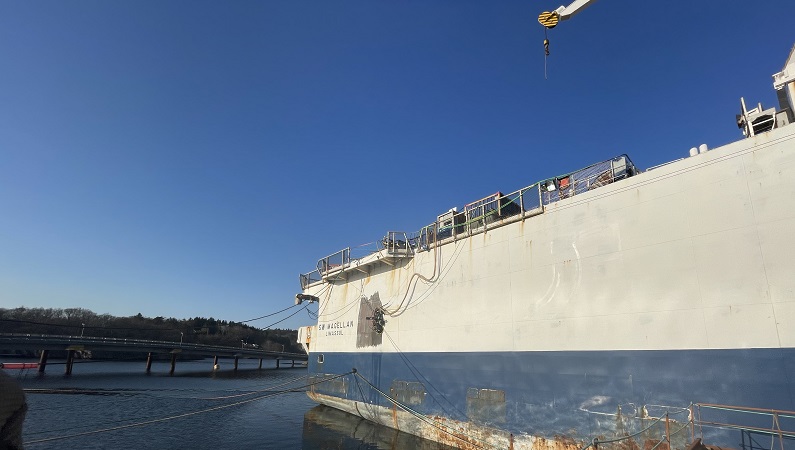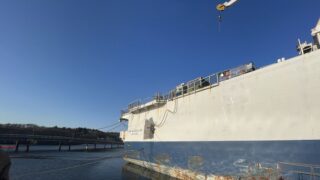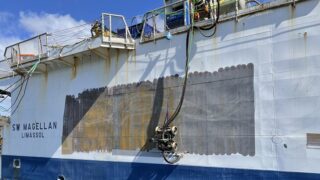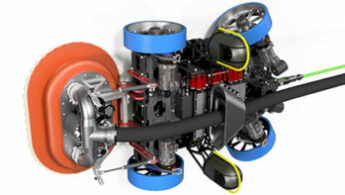Traditional surface treatment of ships and other offshore installations have traditionally been slow, with significant hazards to both people and the environment. By robotizing the surface treatment process and also eliminate the emissions to the external environment, we here at Remotion can offer reduced risk to both personnel and planet while also increasing efficiency and reducing vessel downtime.
The problem
Steel, salt water and copious amounts of time is not an ideal combination. If left on its own rust will eat through the thickest steel plates, and although you can protect the steel with paint for a time, eventually the rust gets a foothold and starts tearing into your once beautiful ship or offshore installation. You are soon left with a dilemma; start repairs on the surface of the hull, or leave it looking like it will soon join the Titanic?
The problem is that repairing the surface of the hull can be expensive and dangerous. You can put your vessel in dock to do the repairs, but that means a halt to all potential income while the repairs are being made. Alternatively, you can do the repairs with people hanging over the sea in harnesses while performing the work, but this is both time-consuming and hazardous for personnel. In addition to this, traditional methods would contribute significant pollution to the ocean in the form of old paint, rust, and sand-blasting grit. The solution? Robotize it.
The solution and development
We here at Remotion specialise in splash-zone and hull operations using our magnetic ROVs (M-ROVs). We attach our robots directly onto the hull with permanent magnets and soft rubber wheels, which is a perfect starting point for surface treatment. It gives us access to almost all the hull, and is gentle enough not to damage any paint, old or new. The need for anyone to work hanging over the side of the ship is gone!
Next, we wanted to address the environmental challenges with surface treatment at sea, the emission of old paint and debris. By adding a large vacuum pump, we managed to turn both the ultra-high pressure washing and sand blasting into closed-loop systems, meaning that anything that goes down to the robot comes back up. We filter and clean the waste products in a separation system on deck, leading to a zero-emission operation when removing old paint and rust and no grey water. No more heavy metals and micro-plastic dropped into the ocean.
The painting itself proved to be a challenge. Although spray painting seems simple enough on the surface, it is affected by a wide range of factors, air humidity, surface temperature, desired paint thickness etc. Interestingly, one of the main benefits of the robotisation also turned out to be one of the most challenging aspects: the accuracy. Where a human painter can evaluate the quality of the paint and make adjustments with “a flick of the wrist”, a robot prefers to do things exactly as planned.
We spent a lot of time coming up with a strategy to account for inaccuracies in the real world when painting, especially for the overlap zones between different paint segments. If not handled correctly the paint could end up several times too thick, or there could be gaps in the paint altogether.

Figure 1: A theoretical approach to overlap in the making.
After several months of testing in our coating laboratory, we managed to produce a method for handling overlap within the acceptable tolerances of the paint while also allowing for real world inaccuracies.

Figure 2: Inhouse test sample of a 4-way overlap.

Figure 3: Paint thickness for a four-way overlap.
In the end we have a complete set of tools capable of handling the entire surface treatment process in hard-to-access areas faster, safer, and more environmentally friendly that previous methods. Interested to hear how our expertise in surface treatment can be applied to your situation? Contact us today.




